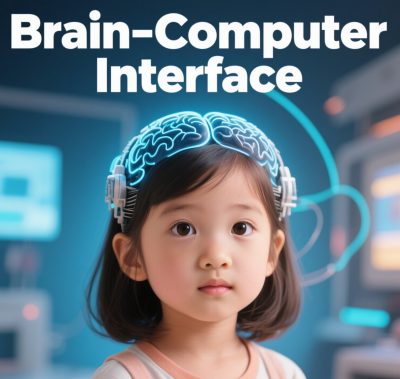
In-Depth Analysis of Global Brain-Computer Interface (BCI) Technology (As of April 2025)
1. Technical Pathways and Core Breakthroughs
Classification and Progress
- Invasive BCI: Neuralink (N1 chip) and BrainGate lead in single-neuron-level signal acquisition via implanted microelectrode arrays. China completed the world’s first Mandarin language reconstruction implant surgery in 2023.
- Semi-Invasive BCI: Synchron’s Stentrode balances safety and signal quality, entering large-scale clinical trials in 2024.
- Non-Invasive BCI: EEG headsets (e.g., Boréas NEO) dominate consumer markets but face noise and low spatiotemporal resolution challenges.
Key Innovations
- Decoding Algorithms: Hybrid LSTM+CNN models achieve 92% accuracy in motion intent recognition.
- Material Advancements: Graphene-based flexible electrodes enable stable cortical signal acquisition for over five years.
- Closed-Loop Systems: Tsinghua-Tianjin University’s “Dual-Loop BCI” reduces drone control latency to 50ms.
2. Applications and Commercialization
| Field | Case Studies | Market Value |
|---|---|---|
| Healthcare | Spinal injury patients use BrainGate to drink via robotic arms; Parkinson’s tremor suppression exceeds 80%. | Global neurorehabilitation market to reach $150B by 2030. |
| Military | U.S. “Silent Command” project tests mind-controlled fighter jets; Chinese astronauts perform space station repairs via BCI. | DARPA allocates additional $200M funding. |
| Consumer Tech | Meta’s AR glasses integrate EEG+eye-tracking; sales surpass 1M units in 2024. | Consumer BCI market to exceed $50B by 2025. |
| Education | NeuroSky headsets boost classroom focus by 40%; VR games enable mind-controlled avatars. | Non-medical applications account for 43% globally. |
3. Global Competition
National Strategies
- U.S.: FDA’s “Breakthrough BCI Pathway” accelerates approvals; Neuralink valued at $18B.
- China: “14th Five-Year Plan” invests $3B; Hainan Boao Pilot Zone fast-tracks foreign BCI devices.
- EU: Enacts Neurotechnology Ethics Framework, mandating local brain data storage.
Supply Chain Gaps
| Component | Domestication Rate | Global Disparity |
|---|---|---|
| High-Density Electrodes | 12% | U.S.’s Blackrock leads by five generations. |
| Neural Decoding Chips | 28% | Energy efficiency lags by threefold. |
| 7T fMRI Equipment | 0% | Fully imported. |
4. Challenges and Ethical Issues
Technical Barriers
- Non-invasive BCI motion control error rate: 15%; invasive device 5-year survival rate: 68%.
- 30% users require 120+ hours of personalized training.
Commercial Hurdles
- Invasive BCI surgery costs exceed $500K; insurance coverage below 5%.
- EU CE certification takes 3.2 years; China’s NMPA prioritizes medical-grade devices.
Ethical Risks
- WHO’s proposed BCI Data Cross-Border Flow Protocol restricts raw neural data exports.
- 47 countries sign the BCI Military Use Ban, prohibiting neuroweapons.
5. Future Trends and Innovations
Technological Leaps
- Quantum BCI: USTC team achieves nanoscale magnetic sensing via NV centers.
- Optoacoustic Fusion: MIT’s fNIRS+EEG system reduces error rates below 1%.
Clinical Translation
- Universal Decoders: University of Pittsburgh’s cross-task intent decoder enters Phase II trials.
- Autonomic Regulation: Vagus nerve BCI reduces epilepsy seizures by 90%.
Industrial Evolution
- Shenzhen-Beijing-Shanghai manufacturing clusters cut electrode costs to one-third of global prices.
- AI models + 3D bioprinting enable customized implants.
6. China’s Strategic Position
Advantages
- Largest neuropatient population (30M+) accelerates real-world research.
- Beijing/Shanghai BCI industrial plans aim to cultivate 3-5 global leaders by 2030.
Bottlenecks
- 90% open-source decoding libraries rely on PyTorch, risking supply chain disruptions.
- Material stability lags international standards by fivefold.
Conclusion and Outlook
BCI technology is transitioning from lab breakthroughs to scalable applications:
- Healthcare: Invasive BCIs target severe conditions; non-invasive systems expand into chronic disease management.
- Consumer Markets: AR/VR integration drives adoption, poised for explosive growth.
- Ethical Governance: Global collaboration needed to balance innovation and equity.
China’s clinical resources + manufacturing prowess position it to lead a “non-invasive consumer, invasive medical” ecosystem by 2030, contingent on overcoming algorithmic and high-end equipment dependencies. As Academician Cheng Heping stated: “BCI is not just a technological revolution—it redefines the boundaries of human cognition.”
Data sourced from publicly available information and subject to verification.





